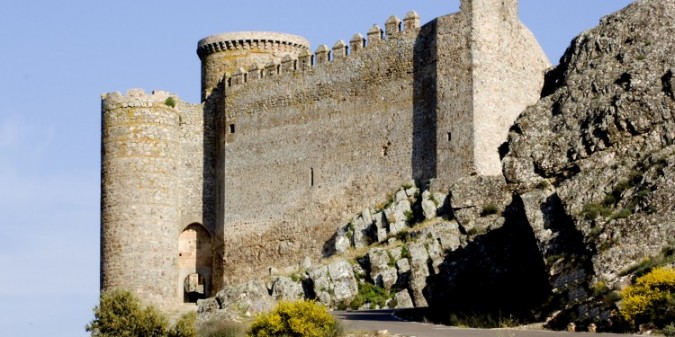Castles route in Badajoz
The historic and cultural heritage of La Siberia and La Serena regions (Badajoz) are not despicable: archaeological sites, dolmens, roman civilization remains, castles, noble medieval houses, the legacy of the Knights of Alcántara and the enigmatic Templars… Not all territories have such a great heritage catalogue as Extremadura!
Herrera del Duque is a town, that belonged to the ducky of Osuna and to the Order of Alcántara. That is why we can see a clearly nobility past in a great number of its houses as the Casa de la Encomienda, most known with the name of Casa del Conco. The main arcaded place and the castle complete the civil architectural heritage.
We have to stop at Talarrubias, where highlight the Gothic Church of Santa Catalina de Alejandría that has Mudejar and Renaissance elements and the Hermitage Del Carmen with Rococo ornamentation.
We cannot miss the visit to the Castle of Puebla de Alcocer, edified over a rocj formation of the Sierra at 700 meters high, with beautiful views over the lands and the plane and the marshes. This fortress of Lares, of the XVth century was owned by the Militar Order of Alcántara and was capital of these warriors friars, who were very influent in many places of Extremadura. The castle still has in good conditions the walls and the dungeon of 12 meters of diameter. In the town it is worthy to see the Duke of Osuna Palace, the house of San Juan de la Puebla and the house of the Inquisition.
If w ego to the south, to La Serena, where the presence of Muslims and later the Christian Reconquest have let many castles in towns like Villanueva de la Serena, Magacela, Zalamea de la Serena, Orellana la Vieja or Almorchón.
There are also many important archaeological sites like the one of Cancho Roano, near Zalamea, a sanctuary-palace of more than 2.500 years of antiquity. It is the best conserved complex of the enigmatic Tartessos culture in the Iberian Peninsula. Moreover, at Campanario there is a very interesting building of Orientalizing period (VI-V centuries B.C) called La Mata.
Discover more precious corners with BungalowsClub!



